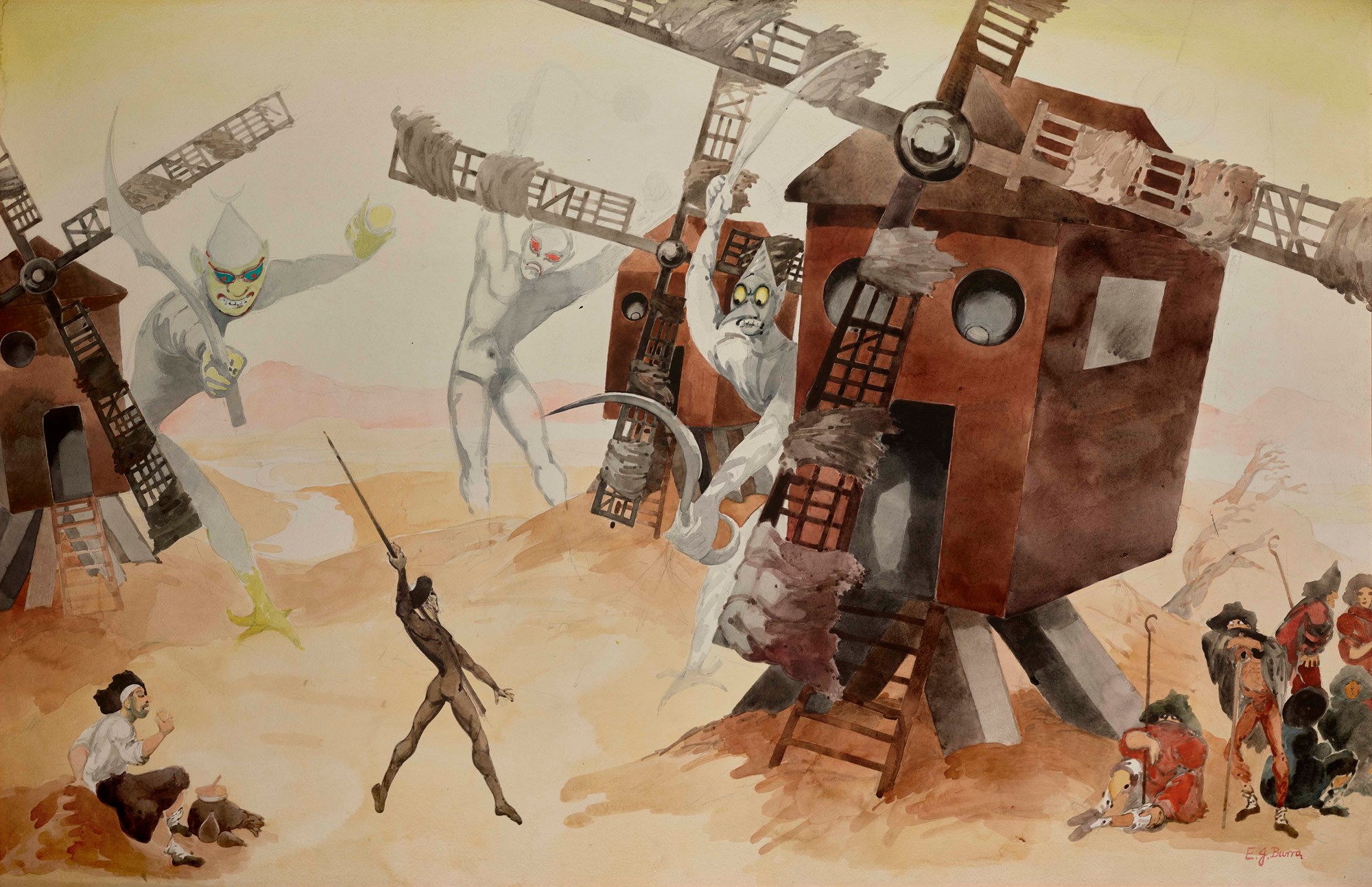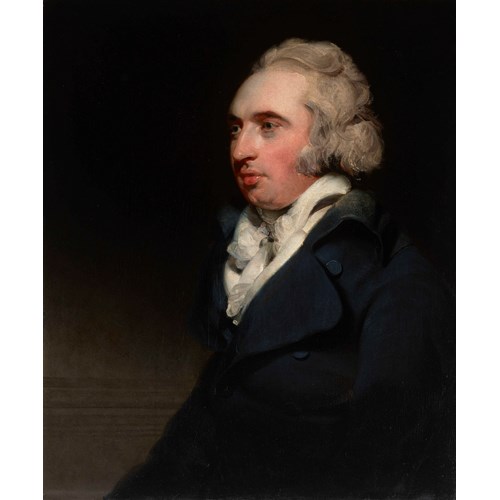Marketplace
Set Design for Don Quixote: Act II, Scene III
Edward Burra
Set Design for Don Quixote: Act II, Scene III
Date 1949
Medium Watercolour over pencil on paper
Dimension 66 x 101.5 cm (26⁰/₁ x 40⁰/₁ inches)
Edward Burra stands a little aside from the mainstream of British Art in the twentieth century, although his work shows him to be by no means unaware of his contemporaries. Intensely aware of people, places and things which he examined with a retentive eye, his unique and unusual style set him apart as an unparalleled force in the canon of Modern British Art.
Towards the end of World War II, Burra turned his eye away from the horrors of war to the creativity and flamboyance of the stage. Having made his artistic debut in set and costume design for Sadler’s Wells in their production of Barbarau(1936), in 1944 Burra was once again chosen for Miracle in the Gorbals (1944) starring Robert Helpmann, whom he befriended. Furthermore, following the success of Carmen (1947) and Don Juan (1948) respectively, Burra set to work on the production of Don Quixote (1950) starring Helpmann, Alexander Grant and Vera Winton. The Sadler’s Wells ballet opened at the Royal Opera House to rave reviews, which premiered on 20th February 1950 followed by six performances. Ninette de Valois choreographed the production with music by Robert Gerhard.
‘The finished article was one of the most subtle, tantalising, difficult and elusive ballets I have seen’ - Kathrine Sorley Walker
Burra’s love of Spain and, in particular, his fascination with flamenico dancing, bull-fighting and Spanish life made him a natural choice of designer, but he was more than pleased to be asked. Rather than producing the over-the-top colourful designs that might have been expected of him, Burra drew on his memories of the Spanish poor in the 1930s and produced low-key costumes in unusally muted tones, leaning on brown and ochre in particular. Sourcing the materials for the costumes and sets was of course a difficulty in the aftermath of the War, with even the Royal Opera House having to work within a quota of coupons, which militated against extravagance.
The present work depicts the opening of Act II, Scene III. A camp of gypsies are seated amongst a field of windmills outside of the village. Don Quixote (Helpmann) and his loyal servant, Sancho Panza (Grant), flushed with victory from a previous encounter, kneel to the sky and render thanks to heaven. Seeing the Moon, he takes it for his love, Dulcinea (Fonteyn), and tries to get to her. As he approaches the windmills he can see the Moon no longer and thinks that evil magicians have hidden his beloved mistress. So, spear in hand, he tilts at the wings of the windmill, which he mistakes for a giant. Alas, the knight is caught by one of the wings and flung into the air. He falls unconscious at Sancho's feet.
Towards the end of World War II, Burra turned his eye away from the horrors of war to the creativity and flamboyance of the stage. Having made his artistic debut in set and costume design for Sadler’s Wells in their production of Barbarau(1936), in 1944 Burra was once again chosen for Miracle in the Gorbals (1944) starring Robert Helpmann, whom he befriended. Furthermore, following the success of Carmen (1947) and Don Juan (1948) respectively, Burra set to work on the production of Don Quixote (1950) starring Helpmann, Alexander Grant and Vera Winton. The Sadler’s Wells ballet opened at the Royal Opera House to rave reviews, which premiered on 20th February 1950 followed by six performances. Ninette de Valois choreographed the production with music by Robert Gerhard.
‘The finished article was one of the most subtle, tantalising, difficult and elusive ballets I have seen’ - Kathrine Sorley Walker
Burra’s love of Spain and, in particular, his fascination with flamenico dancing, bull-fighting and Spanish life made him a natural choice of designer, but he was more than pleased to be asked. Rather than producing the over-the-top colourful designs that might have been expected of him, Burra drew on his memories of the Spanish poor in the 1930s and produced low-key costumes in unusally muted tones, leaning on brown and ochre in particular. Sourcing the materials for the costumes and sets was of course a difficulty in the aftermath of the War, with even the Royal Opera House having to work within a quota of coupons, which militated against extravagance.
The present work depicts the opening of Act II, Scene III. A camp of gypsies are seated amongst a field of windmills outside of the village. Don Quixote (Helpmann) and his loyal servant, Sancho Panza (Grant), flushed with victory from a previous encounter, kneel to the sky and render thanks to heaven. Seeing the Moon, he takes it for his love, Dulcinea (Fonteyn), and tries to get to her. As he approaches the windmills he can see the Moon no longer and thinks that evil magicians have hidden his beloved mistress. So, spear in hand, he tilts at the wings of the windmill, which he mistakes for a giant. Alas, the knight is caught by one of the wings and flung into the air. He falls unconscious at Sancho's feet.
Date: 1949
Medium: Watercolour over pencil on paper
Signature: Signed lower right: E. J. BURRA
Dimension: 66 x 101.5 cm (26⁰/₁ x 40⁰/₁ inches)
Literature: Stevenson, J. (2007) Edward Burra: Twentieth-Century Eye, Jonathan Cape.
Sotheby’s, London (2002) Works from the Estate of Edward Burra.
Exhibition: London, The Tate Gallery, Edward Burra, May-July 1973, no. 85.
London, Olympia, Edward Burra, February-March 2001, no. 45.
Plus d'œuvres d'art de la Galerie









